Molar Disassembly Retreat
This 41 year old female patient was referred to me for endodontic consideration of tooth #37. The patient had a history of endodontic treatment with post and amalgam core/Crown restoration . The patient’s current complaint was sensitivity to chewing and percussion. Periodontal findings were within the range of normal. Palpation was normal and chewing and percussion were slightly positive.
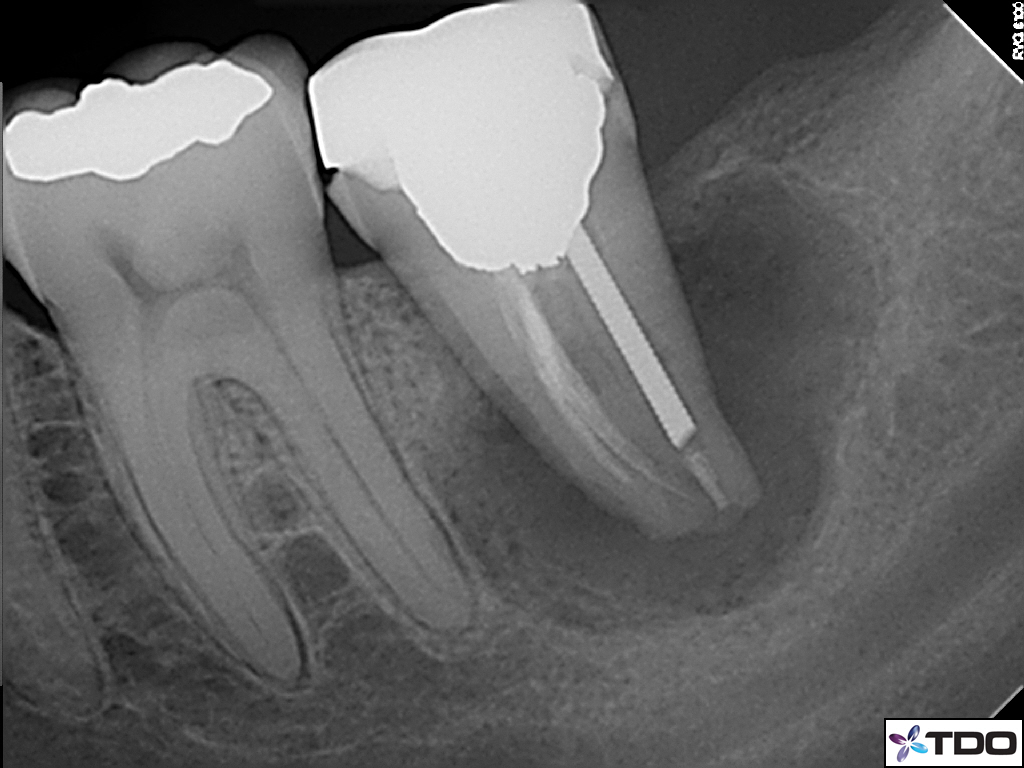
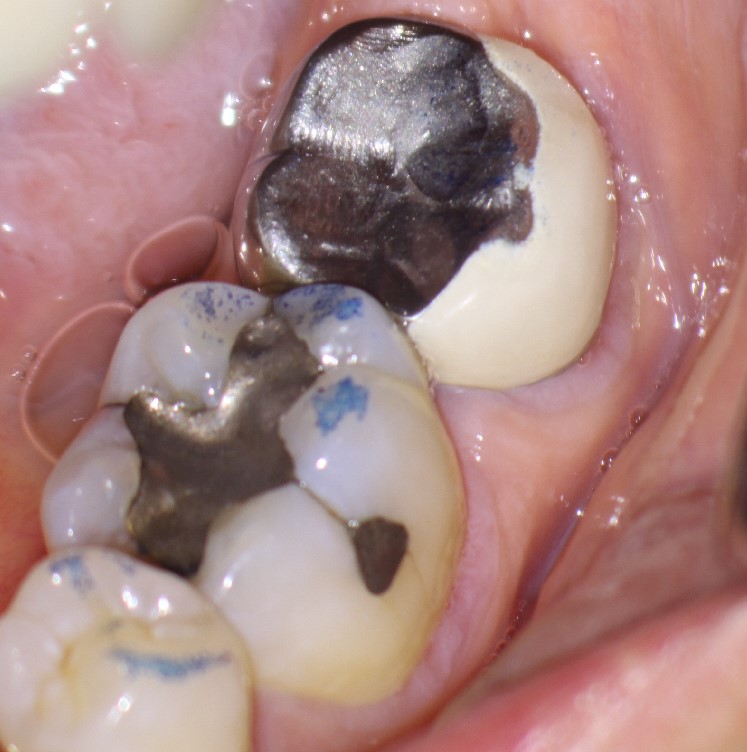
Radiographic examination showed a very large diffuse radiolucent area associated with both apices of this tooth. The size of the lesion was of some concern as well as the extensiveness on the mesial, distal and lingual aspects. I was concerned that the tooth may have been cracked but no Periodontal findings supported this diagnosis. The Crown appeared to be at least 20 years old and was due for replacement. the referring dentist wished me to perform disassembly retreatment on the tooth before replacing the Crown. cbCT radiographic examination showed loss of lingual bone and extensive Periradicular breakdown.
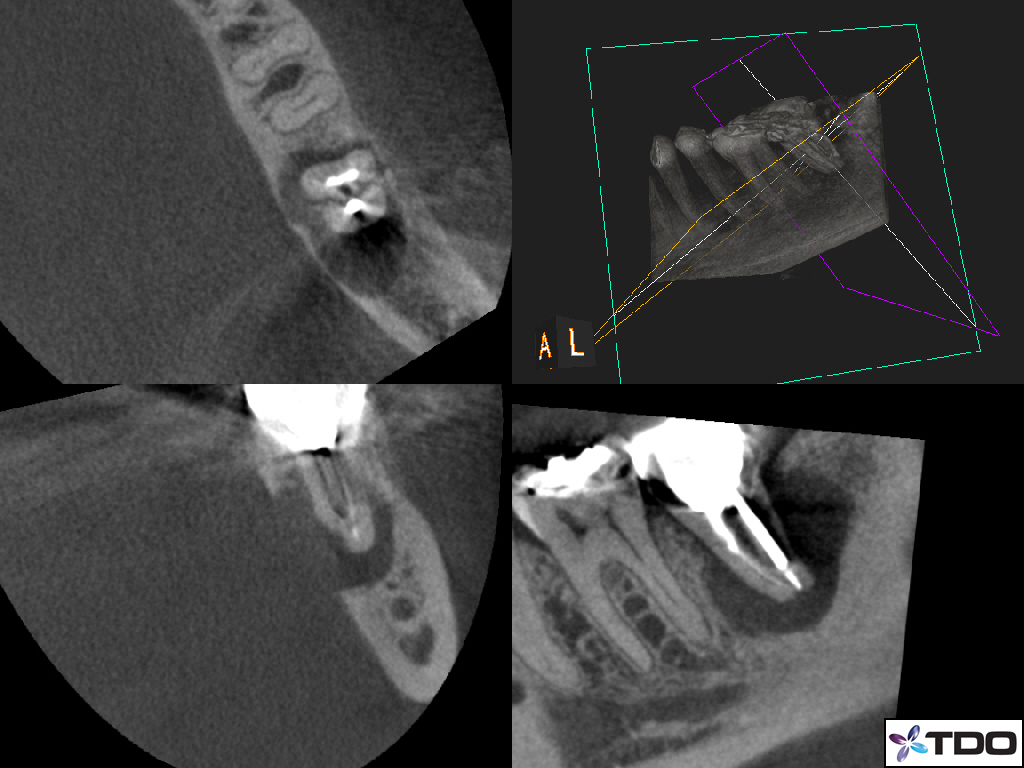

The Crown was cut off the tooth and the post was removed from the distal canal. It appeared to be very loosely placed and I was not sure how much retention it was providing for the core. All canals were negotiated and cleaned and shaped. During disassembly it appears that a small portion of the core amalgam fell into one of the canals and we can see this as a radio-opaque mass in the apical area of the canals.
The case was medicated with calcium hydroxide for one month . The patient returned asymptomatic at which time percussion sensitivity was gone and the tooth was much more comfortable.
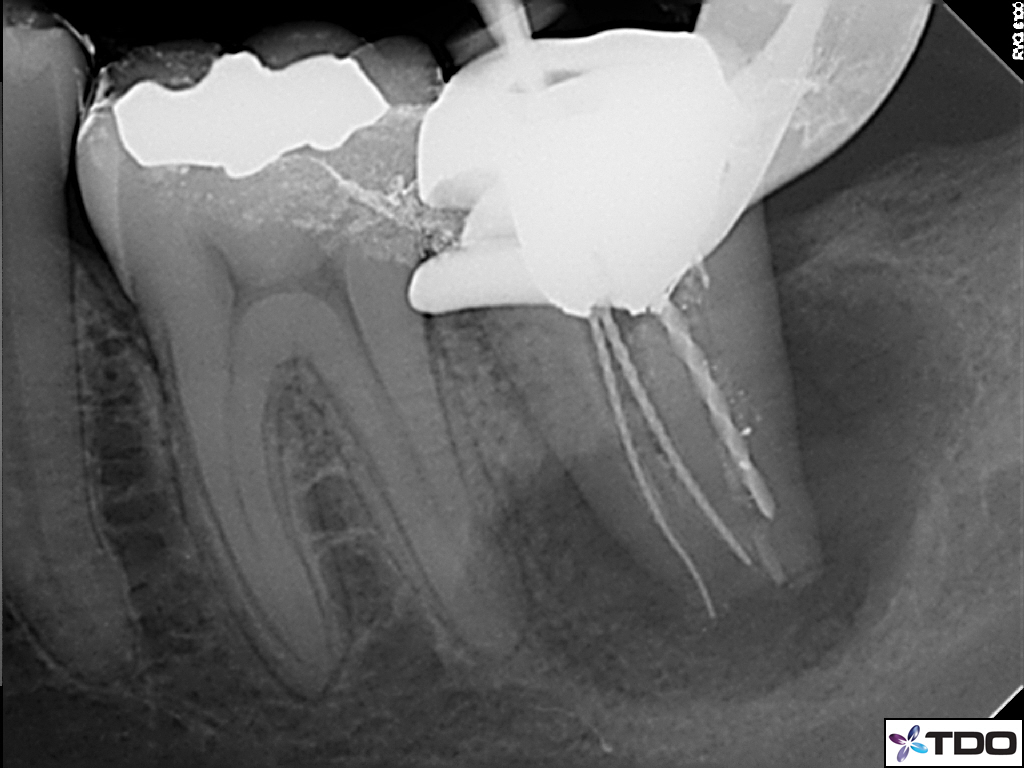
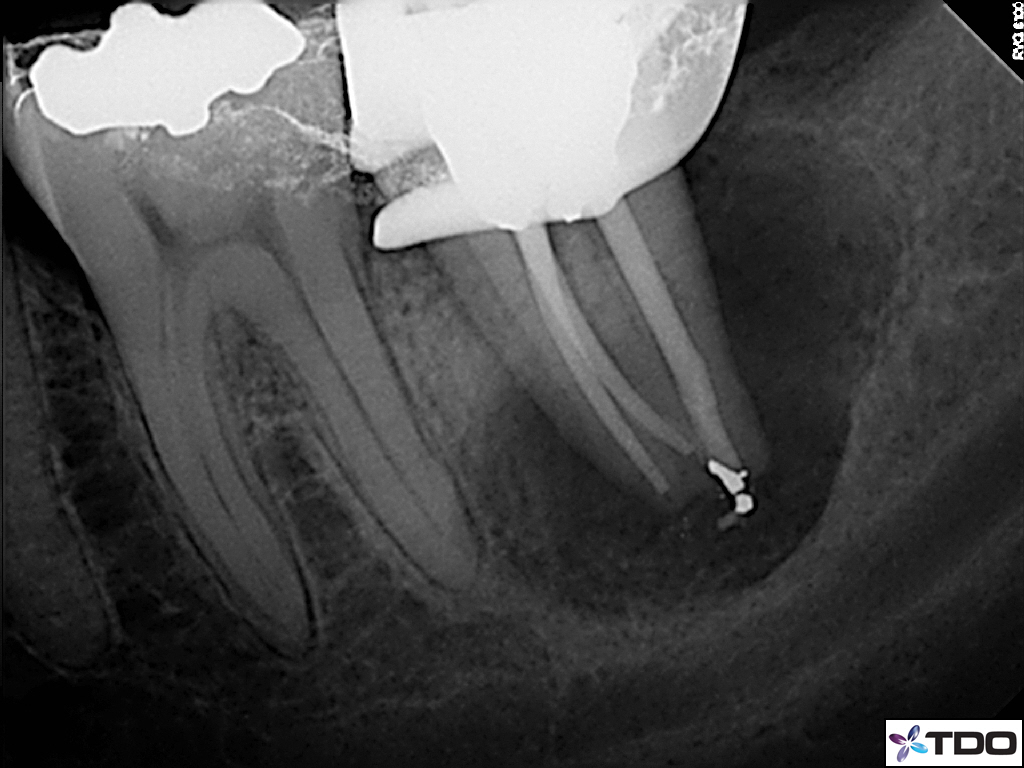
Obturation was completed with vertial compaction of warm gutta percha and Kerr sealer. The dentist was given instructions to re-restore the Crown and the patient was seen at 6 month intervals to monitor healing.
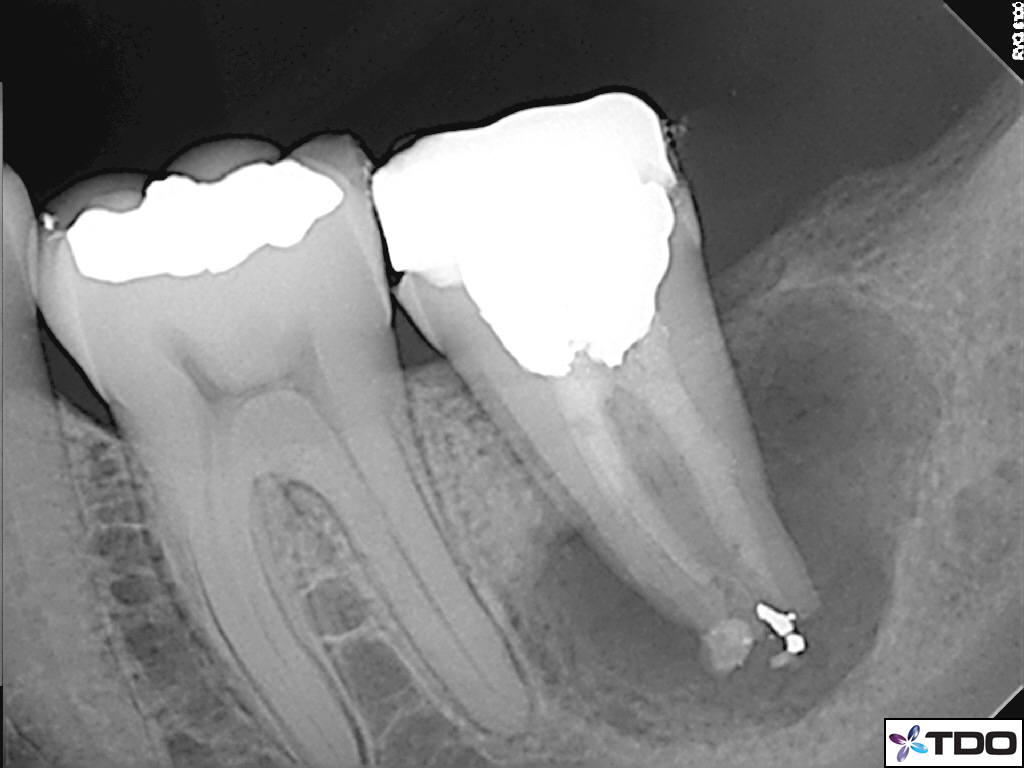
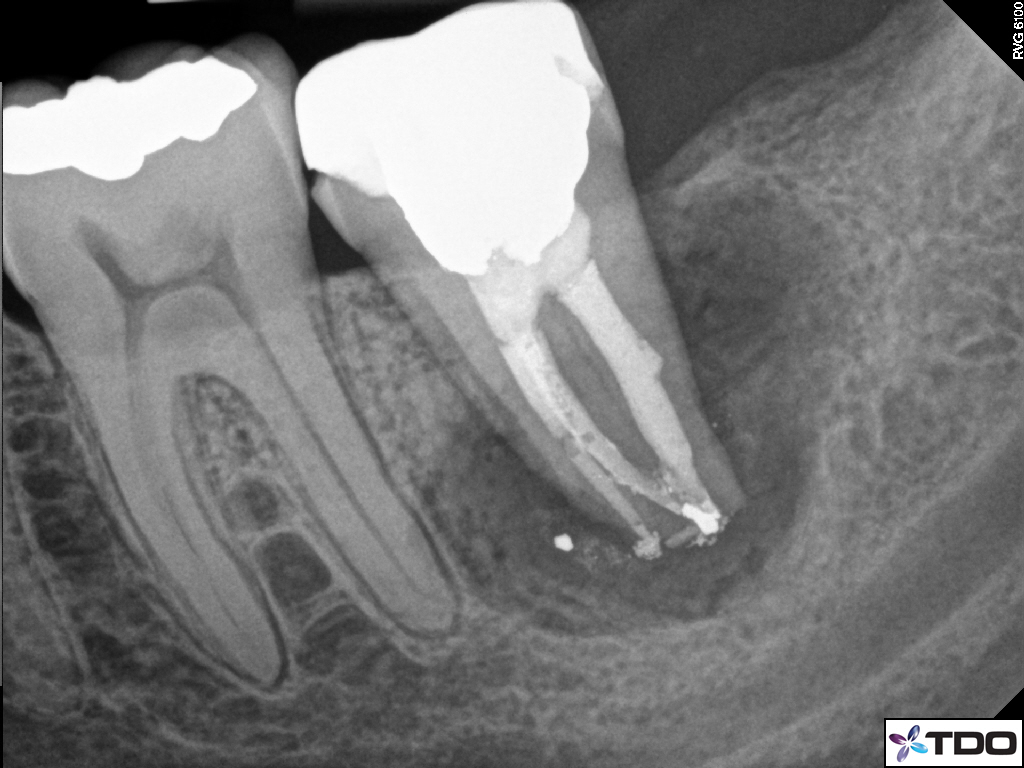
Recall radiographs showed slow but steady healing and the 18 month mark, virtually all of the radiolucent area had resolved and the patient was totally comfortable.

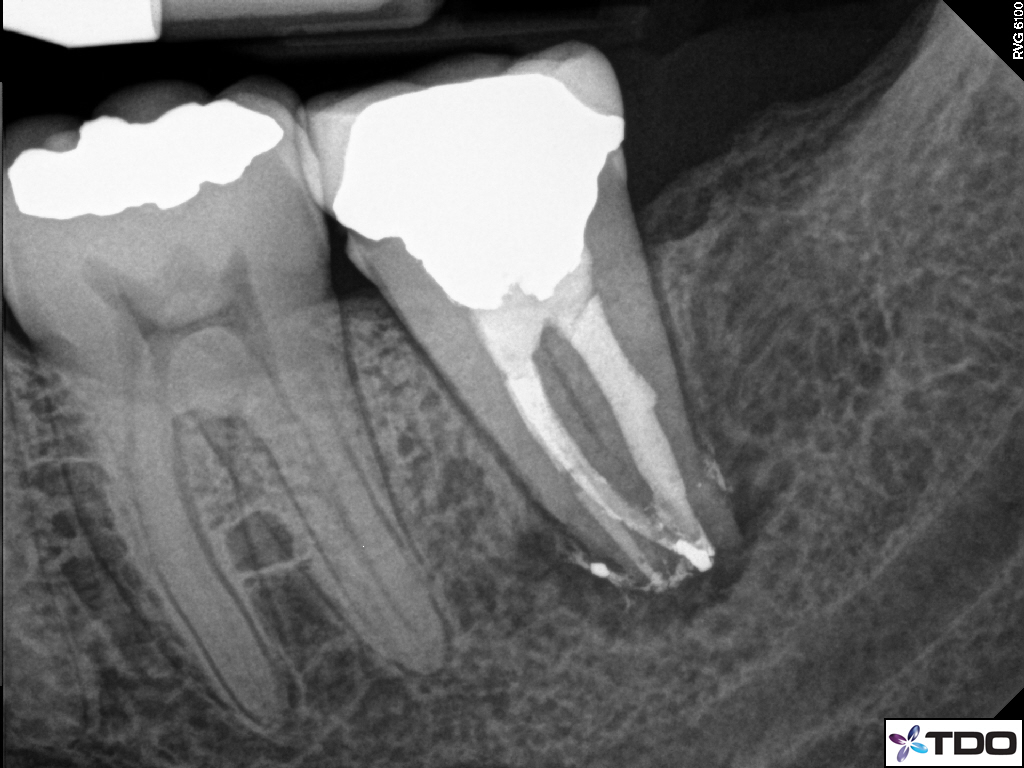
I was less than happy with the mesial margin of the Crown, which appears to be short but all in all I think but the results are excellent considering the size of the original radiolucent lesion and what appeared to be a significantly involved tooth.
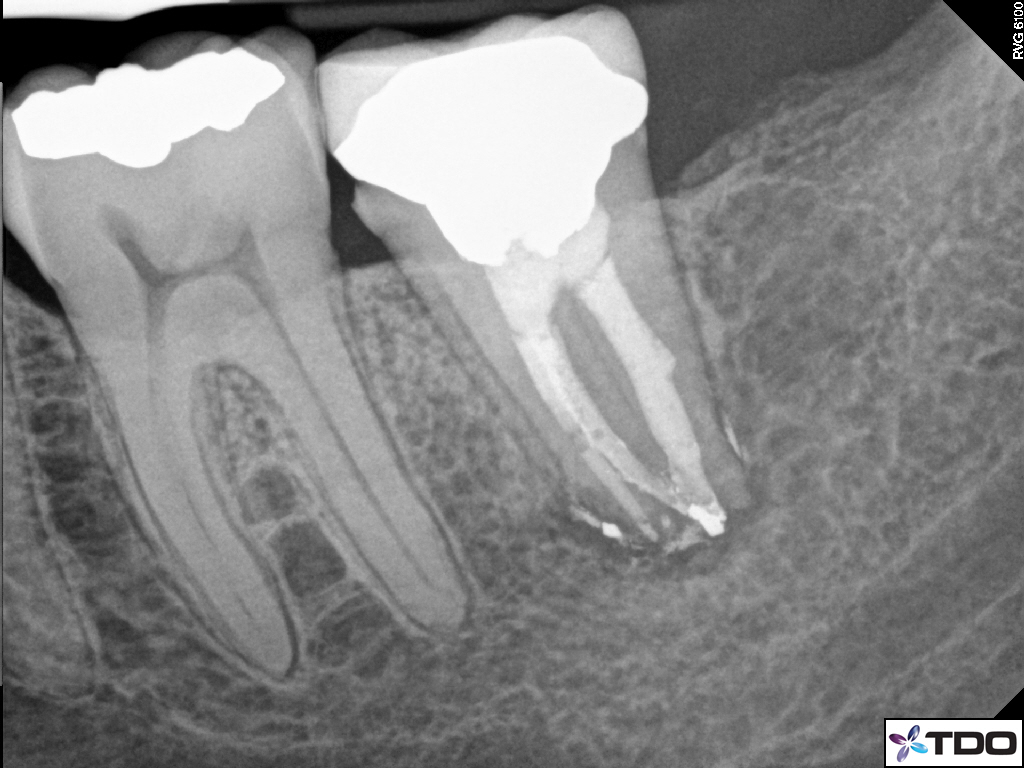
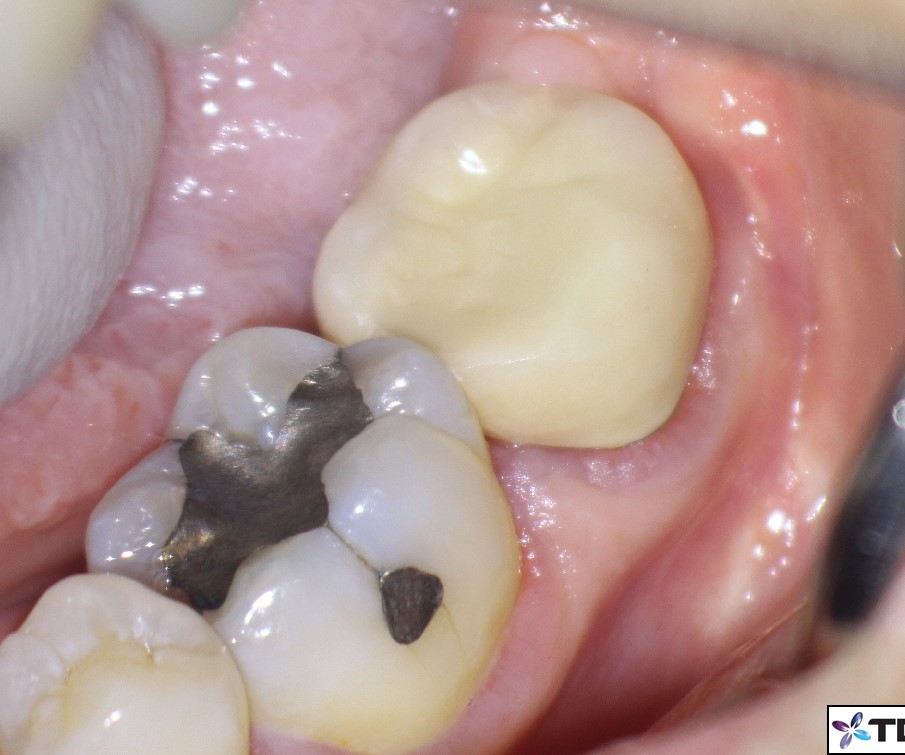
You may wish to note that the tooth was restored quite adequately without a post , so we can say that the post placement for the original Crown was probably not necessary.
